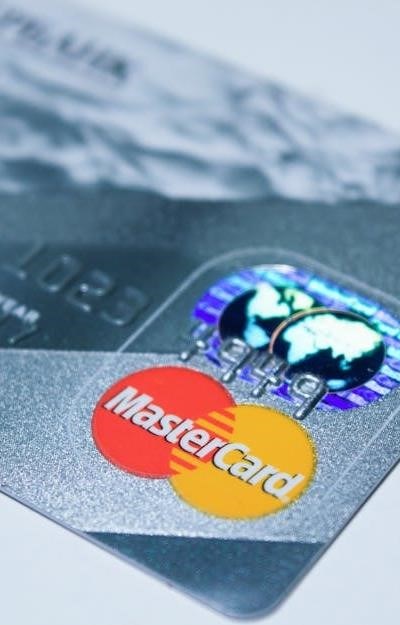
Embarking on your credit cards journey as a beginner can feel daunting.
This guide simplifies the process, focusing on first time users.
We’ll cover the essentials, from understanding unsecured options to
building credit and making smart financial literacy choices.
Gaining a solid grasp of credit history and spending habits is key.
Learn how responsible use impacts your credit score and avoids
debt, setting you up for a secure financial future.
What are Credit Cards & Why Get One?
Credit cards are essentially short-term loans from a card issuer, allowing you to make purchases now and pay later. Unlike using cash, they offer a revolving line of credit limit, meaning you can borrow, repay, and borrow again. But why get one, especially as a first time user?
For a beginner, a credit card is a powerful tool for building credit. Responsible use establishes a positive credit history, crucial for future loans (like mortgages or car loans) and even renting an apartment. It’s a key component of your overall creditworthiness.
Beyond credit building, cards offer convenience and security. They’re widely accepted, and many provide fraud protection. Plus, many cards come with rewards, like cash back or travel points, offering benefits beyond simple purchasing power. Learning responsible use is paramount to avoid debt;
Unsecured vs. Secured Cards: A First-Timer’s Choice
As a first time user, understanding the difference between unsecured and secured cards is vital. Unsecured credit cards don’t require an upfront deposit; approval relies solely on your creditworthiness – often challenging for a beginner with limited credit history.
Secured cards, conversely, require a cash deposit that typically serves as your credit limit. This deposit minimizes risk for the card issuer, making approval easier, even with no credit score. They’re excellent for building credit from scratch.
While secured cards offer easier access, unsecured cards often come with better rewards and benefits. The best choice depends on your situation. If you have some credit history, an unsecured card might be attainable. Otherwise, a secured card is a fantastic starting point for establishing positive spending habits.
Navigating the Key Terms & Costs
Before your application, familiarize yourself with essential terms. The credit limit is the maximum you can charge. The due date is when your minimum payment is due – always pay on time! Understanding fees is crucial; look for annual fees, late payment fees, and foreign transaction fees.
APR (Annual Percentage Rate) represents the yearly cost of borrowing. Lower APR means less interest rates paid on balances carried over. Interest rates significantly impact the total cost of your purchases if you don’t pay in full each month.
Financial literacy demands you understand these costs. Ignoring them can lead to debt. Carefully review the cardholder agreement before accepting any credit cards offer. Knowing these terms empowers responsible use and smart budgeting.
Decoding APR, Interest Rates & Fees
APR, or Annual Percentage Rate, is the yearly interest rates charged on your outstanding balance. A lower APR saves you money! Variable APRs fluctuate with market conditions, while fixed APRs remain constant. Understand promotional APRs – they often expire.
Interest rates are expressed as a percentage. If you carry a balance, interest rates accrue daily. Paying your statement balance in full each month avoids interest rates altogether. Compound interest rates can quickly increase debt.
Beyond APR, watch for fees: annual fees, late payment fees, over-the-limit fees, and foreign transaction fees. Some cards waive certain fees. Responsible use and budgeting help minimize these costs.
Credit Limit & Responsible Use: Avoiding Debt
Your credit limit is the maximum amount you can charge on your credit cards. It’s determined by the card issuer based on your creditworthiness. A higher credit limit doesn’t mean you should spend more!
Responsible use is crucial. Keep your credit utilization ratio (balance/credit limit) below 30% – ideally under 10% – to positively impact your credit score. Avoid maxing out your card.
Always pay at least the minimum payment by the due date to avoid late fees and negative marks on your credit history. Prioritize paying the full statement balance to avoid interest rates and accumulating debt.
Choosing the Right Card for Your Needs
Selecting the best credit cards depends on your spending habits and financial goals. As a beginner, consider what’s most important to you. Are you focused on building credit, earning rewards, or taking advantage of cash back offers?
If you’re a first time user with limited credit history, a secured cards (for comparison) might be easier to obtain initially. Otherwise, explore unsecured options designed for those building credit.
Compare APR, fees, and benefits across different card issuers. Think about where you spend the most – groceries, gas, travel – and choose a card that maximizes rewards in those categories. Don’t overlook student cards if eligible!
Balance Transfers & Card Issuer Considerations
Rewards, Cash Back & Perks: Exploring the Benefits
Many credit cards offer enticing rewards, cash back, and perks. These can range from points redeemable for travel or merchandise to statement credits and exclusive discounts. Understanding these benefits is crucial.
Cash back cards provide a percentage back on your purchases, a simple way to save. Rewards cards often have tiered systems, offering more points for specific spending categories. Some cards offer introductory rewards bonuses upon application and initial spending.
Beyond cash back and points, look for perks like travel insurance, purchase protection, or extended warranties; Evaluate if these benefits align with your lifestyle and spending. Remember to factor in annual fees when assessing the overall value of the card issuer’s offerings.



This is a fantastic, clear guide for anyone starting out with credit cards! I especially appreciate the breakdown of unsecured vs. secured cards – that
Really well-written and concise! I wish I